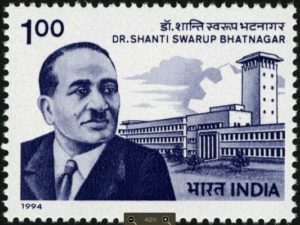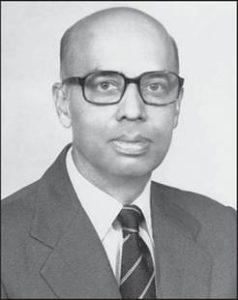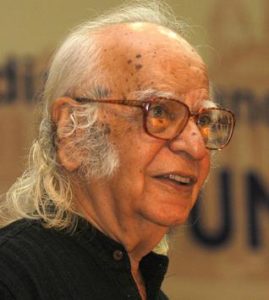Continued from Unsung Heroes of Indian Science – Part I
Let’s look at some of little known Indian scientists who excelled in their domains and brought to light new discoveries or created inventions
Shanti Swaroop Bhatnagar

Sir Shanti Swaroop Bhatnagar is a well known Indian scientist owing to the national award instituted for science & technology in his name. However, few of us know that the Council of Scientific and Industrial Research (CSIR) was established way back in 1942, much before India’s independence! Born in 1894, Bhatnagar got his B.Sc degree from Punjab University in 1913. He did his first research work for his MSc degree on the subject of surface tension.
Bhatnagar spent 16 years in Punjab University as a professor of physical chemistry and Director of University Chemical Laboratories. During this time, he did considerable work in applied chemistry, solving industrial problems such as developing process for converting bagasse into cattle feed, using Indian gum to lowering the viscosity of the mud in oil drilling operations and studying applications of magneto chemistry.
During the British Raj, the government was reluctant to set up a separate department for scientific and industrial research in India. However, Sir Arcot Ramaswamy Mudaliar, the last Diwan of Mysore kingdom, insisted on setting up a board. Due to the efforts of Mudaliar and Bhatnagar, the CSIR was established as an autonomous body in 1942. Under Bhatnagar’s able leadership, CSIR set up 12 national laboratories such as the Central Food Processing Technological Institute, Mysore, the National Chemical Laboratory, Pune, the National Physical Laboratory, New Delhi, the National Metallurgical Laboratory, Jamshedpur, the Central Fuel Institute, Dhanbad. His association with Pandit Nehru enabled him to set up so many institutes, which was termed as the ‘Nehru-Bhatnagar Effect’ by Sir C.V. Raman!
Vainu Bappu

Vainu Bappu is considered the father of modern Indian astronomy, who largely contributed to the establishment of the Indian Institute of Astrophysics. His is a case of like father like son! Bappu was born in 1927 to a senior astronomer in the Nizamiah Observatory, Hyderabad. Being a keen amateur astronomer, Bappu published various papers on variable star observations. After obtaining his Masters degree in Physics from Madras University, he joined the Harvard University on a scholarship.
At Harvard, Vainu Bappu discovered a comet named ‘Bappu-Bok-Newkirk’, after Bappu and his colleagues Bart Bok and Gordon Newkirk. He completed his Ph.D in 1952 and joined the Palomar observatory on the prestigious Carnegie Fellowship. There, Bappu and Colin Wilson discovered a relationship between the luminosity of particular kinds of stars and some of their spectral characteristics, which is today known as the Bappu-Wilson effect.
On his return to India, Bappu was appointed to head a team of astronomers to build an observatory at Nainital. He worked towards building a large indigenous optical telescope and a research observatory in India led to the founding of an optical observatory of Kavalur. In 1979, he was nominated as the President of the International Astronomical Union. Due to his efforts, India’s largest optical telescope, the Vainu Bappu Observatory was established in 1986, just after his death!
Yash Pal

Prof. Yash Pal is an Indian astrophysicist who has made significant contributions to the study of cosmic rays, high-energy physics, astrophysics, and science education. Born in 1926 in Jhang in Pakistan, he got his Masters degree in physics from Panjab University in 1949. Later in 1958, he did his Ph.D from the Massachusetts Institute of Technology, specializing in astrophysics.
Yash Pal started his career at the Tata Institute of Fundamental Research, Mumbai, as a member of the Cosmic Rays group.
In 1973, Yash Pal became the first Director of the Space Applications Centre in Ahmedabad when the government set up the Department of Space. He later served on various administrative assignments such as the Secretary General of the UN Conference on Peaceful Uses of Outer Space, Chief Consultant for Planning Commission, Secretary for Department of Science & Technology, and Chancellor of Jawaharlal Nehru University. However, his role as the Chairman of the University Grants Commission (UGC) during 1986–1991 was the prominent one.
As the UGC Chairman, Yash Pal initiated numerous innovative programmes to improve the standards of higher education in India. During this period, he also made regular appearances on a TV show known as “Turning Point” on Doordarshan, which explained the great discoveries of science and explained scientific concepts in layman’s language. Similarly, he worked on “Race to Save the Planet”, an international TV series that examined the major environmental issues facing the world. No wonder he received the Kalinga Prize, awarded by UNESCO for the popularisation of science in 2009!
Factfile –
http://indiatoday.intoday.in
http://insaindia.org





